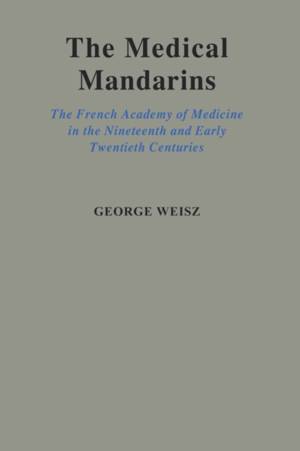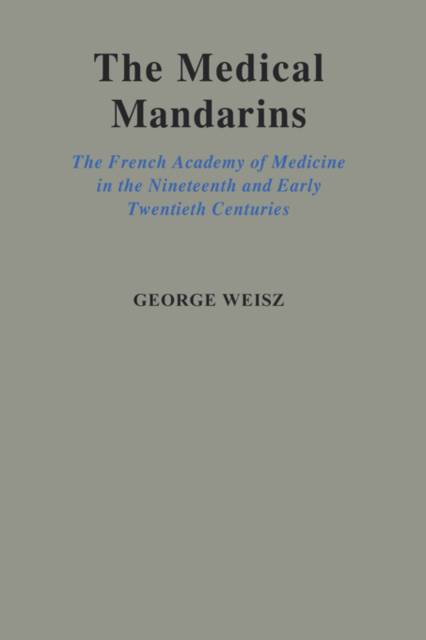
Je cadeautjes zeker op tijd in huis hebben voor de feestdagen? Kom langs in onze winkels en vind het perfecte geschenk!
- Afhalen na 1 uur in een winkel met voorraad
- Gratis thuislevering in België vanaf € 30
- Ruim aanbod met 7 miljoen producten
Je cadeautjes zeker op tijd in huis hebben voor de feestdagen? Kom langs in onze winkels en vind het perfecte geschenk!
- Afhalen na 1 uur in een winkel met voorraad
- Gratis thuislevering in België vanaf € 30
- Ruim aanbod met 7 miljoen producten
Zoeken
The Medical Mandarins
The French Academy of Medicine in the Nineteenth and Early Twentieth Centuries
George Weisz, George Weiz
Hardcover | Engels
€ 212,45
+ 424 punten
Omschrijving
This wide-ranging and imaginative book examines the social and scientific role of the French Academy of Medicine from its creation in 1820 to the outbreak of the Second World War. The first chapters focus on the institution and its activities, including the evaluation of medical innovations and the cultivation of professional memory through eulogies and institutional art. Weisz argues that the Academy was gradually transformed from a low-status public institution that was central to French medical science in the nineteenth century to an "establishment" institution largely irrelevant to medical science but playing a key role in public health policy. The second half of the book uses the activities and literary productions of the Academy to explore broader issues of medical history. The Academy's role in the regulation and scientific study of mineral waters illuminates processes of discipline formation in medical science and explores the therapeutic specificity of French medicine. Academic debates are used to investigate the appropriation of new research techniques like animal experimentation and quantification in therapeutic reasoning. Academic eulogies provide a starting point for the evolving medical and scientific reputation of Laennec, the inventor of ausculation, Using techniques of prosopography applied to the membership of the Academy, Weisz goes on to analyze the role of the Parisian medical elite in French medicine and its social place within the French bourgeoisie. His concluding chapter examines the emerging self-images of this Parisian elite in academic eulogies.
Specificaties
Betrokkenen
- Auteur(s):
- Uitgeverij:
Inhoud
- Aantal bladzijden:
- 328
- Taal:
- Engels
Eigenschappen
- Productcode (EAN):
- 9780195090376
- Verschijningsdatum:
- 2/03/1995
- Uitvoering:
- Hardcover
- Formaat:
- Genaaid
- Afmetingen:
- 163 mm x 242 mm
- Gewicht:
- 721 g

Alleen bij Standaard Boekhandel
+ 424 punten op je klantenkaart van Standaard Boekhandel
Beoordelingen
We publiceren alleen reviews die voldoen aan de voorwaarden voor reviews. Bekijk onze voorwaarden voor reviews.









